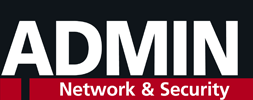
Lead Image © James Thew, Fotolia.com
Purdue Model for industrial networking
Safety Dance
By way of an example of how digital transformation has fundamentally changed the way things are done, just consider how buildings are managed and operated. This development is particularly advanced in the area of facility management from the use of what is known as the "digital ceiling." This technology integrates different building systems such as lighting, heating, cooling, and security on a single, intelligent network platform. The benefits offered by this kind of integration are huge: Besides significant efficiency boosts attributable to the automation of building services, the technology also improves cost efficiency in facility management.
In this article, I focus on the challenges of the digital ceiling and of establishing the framework for a more in-depth discussion of the Purdue Model and its application in the context of modern facility networking. I then go on to explore how the Purdue Model helps ensure secure and efficient networking in facility management by highlighting specific security strategies for each level of the technologic implementation.
Digital Ceiling
The digital ceiling relies on IP-based communication and is powered by Power over Ethernet (PoE), enabling direct connections over the facility network with state-of-the-art Ethernet switches. Although these technologic advances open up new options, they also harbor specific risks. Centralized control of a zoo of systems on a network extends the attack surface for cyberattacks, with a greater risk of data leaks or even manipulation of critical systems.
Many security risks (e.g., misconfigured access controls and poor authentication mechanisms) lead to a greater risk of unauthorized access. Moreover, widespread data acquisition and processing by smart building systems poses a considerable challenge in terms of data protection, particularly with regard to personal data.
...Buy this article as PDF
(incl. VAT)
Buy ADMIN Magazine
Subscribe to our ADMIN Newsletters
Subscribe to our Linux Newsletters
Find Linux and Open Source Jobs
Most Popular
Support Our Work
ADMIN content is made possible with support from readers like you. Please consider contributing when you've found an article to be beneficial.






